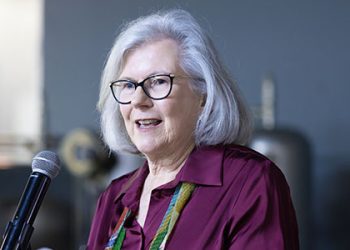Thabo Mohlala
Failure to contextualise and tap into local knowledge is what often undermines the impact of some of the devices and tools designed to resolve a particular social or environmental challenge.
This is the view of Professor Muthuni Masinde, an associate professor and head of the department of information technology in the faculty of engineering, built environment and information technology (FEBIT).
Masinde last month made a presentation on Design Thinking to the national science festival hosted by Scifest Africa, formerly known as Sasol Scifest. The festival aims to simplify and break down popular stereotypes and create new attitudes and change mind set about STEM.
Muthini is an expert in the application of Design Thinking and her area of interest is on how to harness innovation to become relevant and benefit society. In her presentation, she placed a lot of emphasis on the need to source local knowledge of beneficiaries to deliver better outcomes.
Said Masinde: “If we stick to the core science with a fixed frame without thinking about the people whom we are creating the products for, we will then fail to create an impact. Contextualised innovations built by, with and for local people, have a higher chance of succeeding and Indigenous Knowledge Systems bridges this gap because it supports ways that are culturally appropriate and locally relevant to them.”
Masinde has designed a tool called an Information Technology and Indigenous Knowledge (ITIK), which helps predict drought for small-scale African farmers. She developed the device in 2019 to bridge the divide between indigenous knowledge and scientific knowledge. She said what inspired the idea was the fact that drought has been one of the chronic natural hazards that destabilises farming activities on the African continent. She argued that of all the disasters faced by humanity, drought is responsible for over 88% of them.
ITIKI was developed with the objective of delivering a high accuracy, affordable forecasting tool for Africa’s small-scale farmers that boosts yield, incomes and resilience through better cropping decisions and its success was to be determined by the level of community participation in building it, said Masinde.
In addition: “This project acknowledges the fact that lack of an appropriate drought-forecasting tool for small scale farmers makes them continue to rely on their indigenous knowledge to predict the occurrence of rainfall and critical cropping decisions, but this knowledge seems to be disappearing due to climate change.”
The tool is an integrated system (artificial intelligent algorithms, weather sensors and a Mobile Application) that combines weather data with the traditional knowledge of African farmers to predict droughts. According to Masinde, the weather and planting information is distributed to the farmers through text messages in their home languages and can be received on a simple and low-cost mobile phone. The forecasts are sent to farmers via an app or SMS message and arealso accessible through a web portal, emails and audio files.
Masinde said what gave impetus to the design of the tool was to tap into local people’s knowledge on droughts. She said her own experience of drought when she was growing up in Kenya also inspired the ITIK. She said she applied three design science tools in the entire innovation process leading to high rate of adoption in Kenya, Mozambique, and South Africa.
When the tool was developed, said Masinde, they followed the design process, which involved listening to farmers and hosting consistent contact sessions with them to find out where their challenges are. They then came up with prototypes, tested those prototypes and repeated the process.
She said in their interaction, they found that what works in Mozambique does not necessarily work in Kenya and in South Africa “because each perceived things differently and their Indigenous Knowledge System (IKS) is unique”. Said Masinde: “We ensured participatory community driven technique through brainstorming, storytelling, prototyping, and repeated learning launches so that we see which one works and which one doesn’t.”
Masinde called on designers to draw on the indigenous knowledge to ensure their tools speak to the needs of the end-users. She said the world is facing with many challenges and disasters such as Covid-19 and the recent problem of swarms of locusts invading farms on the African continent.
“…so there are many problems and I believe we can still use IKS in those domains as long as we use design science with our people. Do not go to the office, develop a product, and deliver it, rather involve the beneficiaries, and work together with them. When you do that, then we can say that you are an innovator.
Imagination is the highest form of research, be in a quiet moment, think about it and you will become an innovator. Do you want to create innovations that are relevant and impactful to the society? IKS intertwined in the Design Thinking process is one of the best tools, and it works wonders,” said Masinde.
Masinde has already presented her tool to one of the global flagship event: World Bank Water Week in Washington, DC in April 2019. The event draws over 500 delegates including leading innovators, thought leaders and partners from the globe.







